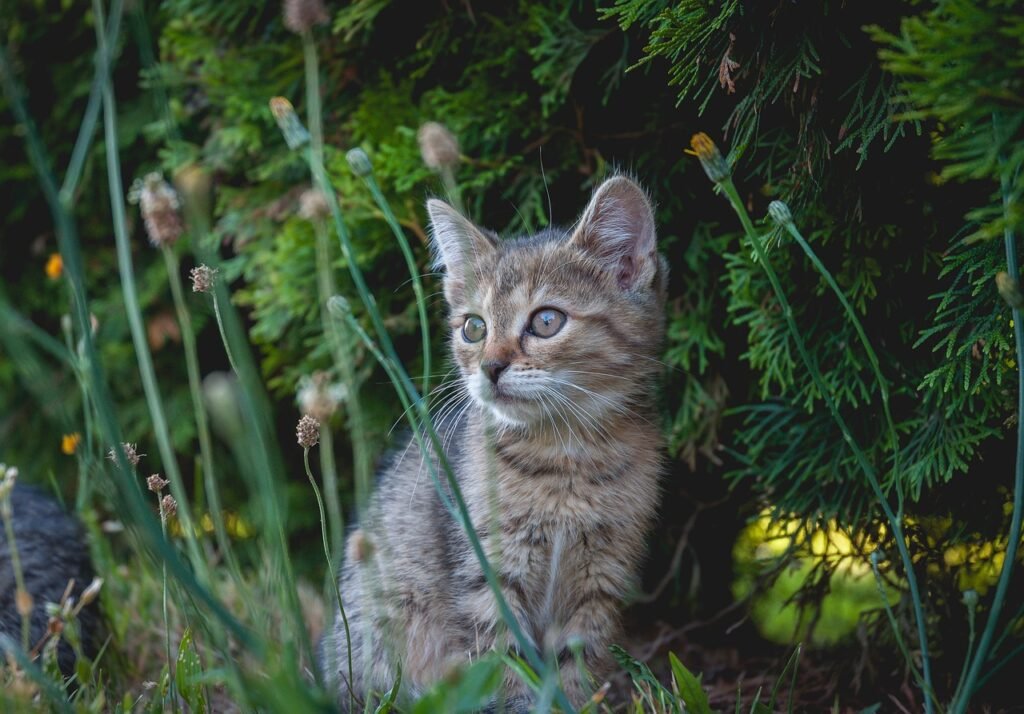Cats have fascinated humans for centuries with their mysterious behaviors and uncanny abilities to detect changes in their environment before any human can. Their enhanced senses allow them to perceive things in ways that most humans cannot, leading to a wealth of anecdotes and research about how they perceive the world. This article explores nine ways cats detect changes in their environment before humans do, shedding light on the incredible adaptive traits of our feline companions.
1. Acute Hearing: Detecting the Subtlest Sounds

Cats possess an extraordinary sense of hearing that can detect sounds humans cannot. They can hear frequencies ranging from 48 Hz to 85 kHz, whereas humans can only hear between 20 Hz to 20 kHz. This ability allows them to pick up on minute sounds such as the rustling of leaves, the distant scurrying of a mouse, or even the vibrations of an insect’s wings. Their acute hearing not only aids in hunting but also helps them sense changes in their environment, like approaching footsteps or the low hum of electronic devices.
2. Enhanced Sense of Smell: Uncovering Hidden Scents

Cats have a highly developed sense of smell, which is up to 14 times more sensitive than that of humans. Their olfactory epithelium, the tissue responsible for detecting odors, is much larger than that of humans. This heightened sense of smell enables cats to sense changes in the environment through pheromones, identifying unseen visitors, and detecting food from a distance. It also allows them to sense subtle changes such as new objects being introduced into their space or the presence of other animals.
3. Sensitivity to Vibrations: The Skill of Seismic Detection

Cats are remarkably sensitive to vibrations, which can alert them to changes in their environment long before a human can detect them. They are capable of sensing the smallest seismic activities, helping them anticipate natural events like earthquakes. Their paw pads and whiskers can pick up vibrations from the ground or surrounding air, enabling them to detect the presence of other animals or people approaching, even from great distances.
4. Keen Vision in Low Light: Nighttime Navigators

Cats are known for their ability to see in low light conditions, which is far superior to human capabilities. Their eyes have a higher number of rod cells that are sensitive to dim light, allowing them to detect movement and changes in shadows that would be invisible to the human eye. This adaptation is an advantage for hunting at night but also helps in perceiving environmental changes, such as the presence of threats or prey under the cover of darkness.
5. Whiskers: The Multifunctional Sensory Tool

Whiskers are not just appealing facial features; they serve as highly sensitive tactile tools. These long, stiff hairs are connected to nerve endings that pick up even the slightest air currents and changes in the environment. Whiskers help cats detect nearby objects, even in the dark, enabling them to navigate tight spaces, and sense obstacles and changes in atmospheric pressure. This acute sensitivity makes whiskers an essential tool for understanding their surroundings.
6. Coiled Muscles: Precision in Movements

Cats have evolved to have a unique body structure with highly flexible spines and agile, coiled muscles that allow them to move quietly and efficiently. This physical capability helps them adapt quickly to environmental changes, whether escaping potential threats or catching prey. The intricate balance and agility of cats enable them to assess and respond to changes faster than humans, maintaining their safety and social dynamics.
7. Territorial Awareness: Understanding Their Realm

Cats are inherently territorial creatures, possessing a strong attachment to their personal space. This territorial awareness means they are highly attuned to any changes in their environment, such as alterations in their regular pathways or the introduction of new objects. Any slight change can trigger a heightened state of alertness, prompting them to investigate and assess the safety and implications for their territory.
8. Emotional Sensitivity: Detecting Human Emotions

Cats are surprisingly adept at reading human emotions. They can pick up on subtle cues such as changes in body language, voice tone, and pheromone emissions from humans experiencing different emotions. This sensitivity allows them to sense their owners’ emotional states and respond accordingly, either by offering comfort or seeking attention. Their emotional intelligence also includes detecting stress or illness, often alerting owners to changes they may not have noticed themselves.
9. Weather Awareness: Natural Meteorologists

Many cat owners may have noticed their feline friends acting strangely before a storm or weather change. Cats have the ability to detect changes in atmospheric pressure and humidity, which can signal impending weather shifts. These subtle environmental cues alert cats to seek shelter or adjust their behavior in preparation for changing conditions, demonstrating their inherent ability to act as natural meteorologists.
Conclusion: Celebrating the Natural Instincts of Cats

Cats possess a remarkable array of sensory tools that enable them to detect changes in their environment far more efficiently than humans. From their acute hearing and sense of smell to their sensitive whiskers and ability to detect vibrations, these abilities highlight their extraordinary adaptability and survival instincts. Understanding these traits can deepen our appreciation of our feline companions, offering insight into the incredible, often mysterious world of cat behavior.
Hi, I’m Bola, a passionate writer and creative strategist with a knack for crafting compelling content that educates, inspires, and connects. Over the years, I’ve honed my skills across various writing fields, including content creation, copywriting, online course development, and video scriptwriting.
When I’m not at my desk, you’ll find me exploring new ideas, reading books, or brainstorming creative ways to solve challenges. I believe that words have the power to transform, and I’m here to help you leverage that power for success.
Thanks for stopping by, Keep coming to this website to checkout new articles form me. You’d always love it!






